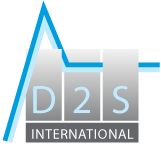CORRUGATION
Wheel rail corrugation in urban transport
Contract: G3RD-CT-2002-00807
Website: www.corrugation.eu
Acronym: CORRUGATION
Full title: Wheel rail corrugation in urban transport
Project Co-ordinator: D2S International, Heverlee (BE)
Starting date: June 1, 2002
Duration (in months): 52
Budget: € 7,787,628.00
EC contribution: € 4,198,237.00
Background
Corrugation is an annoying and costly phenomenon that reduces the lifetime of both wheels and rails, causes an irritating emitted rolling noise and leads to safety concerns. Up till now, no real cure exists and the only available solution is grinding the rails, which is a costly and recurring process.
Objectives
The objective of this project was to reduce corrugation growth by 50% over the same time period by developing solutions at the track level and at the rolling stock level.
Description of work
Corrugation measurement equipment
Dedicated equipment and methods were selected or specifically developed for the measurement of corrugation and all relevant parameters that influence corrugation. A new manual corrugation measurement device was developed alongside a new laser based measurement device.
Measurements were carried out on the test sections to verify and compare the performance and accuracy of the selected devices and methods. These measurements were further used in the project as reference data and compared with measurement data after modification of the track and wheelset parameters that influence corrugation.
Numerical modelling of macroscopic wheel/rail forces
Two different multi-body dynamics models, portraying the passage of a railway vehicle on a track, were developed and tested separately. A common test case was defined and both models were validated by comparing the predictions of the models with the results of measurements on a reference track section.
A lumped parameter model was developed and progressively tuned and updated in order to fit the various measured data.
Finally, a finite element model of a ballasted track on wooden sleepers was developed. The parameters of the model were updated, based on the results of experimental measurements on site and in the laboratory. A sensitivity analysis was carried out to evaluate the influence of rail pad and undersleeper pad stiffness and modal damping on the rail transfer functions.
All the numerical models converged to same findings:
-
It is not the P2 resonance (i.e. first wheel-rail vertical bending) which is related with corrugation wavelengths, but especially vertical anti-resonances as well as rail lateral and wheelset lateral resonances (in second order).This is a major finding of this project.
-
Embedded rail can prevent the formation of corrugation, provided that a sufficient level of rail damping is inserted.
Wheelset test rig for corrugation wear simulation
An existing full-scale wheel/rail interface test rig used for research and fatigue testing was adapted to simulate the effect of stick-slip at the wheel/rail interface. After 200 km, corrugation appeared on the rails, showing the different steps responsible for corrugation in real conditions. It is the first time that rail corrugation initiation and growth have been replicated on a test bench. This test rig was further used to monitor the effect on corrugation growth of wheelsets with resilient wheels.
Design and validation of anti-corrugation measures
Various anti-corrugation measures were designed for vehicles and track.
Three types of measures concern the wheelset:
-
The definition of geometrical tolerances of wheel and track to avoid corrugation. This parameter has shown to have an important influence on corrugation development; after tightening the tolerances on the diameters of both wheels of one wheelset, STIB observed a dramatic reduction of rail corrugation growth in curves in its metro network.
-
A torsional vibration absorber tuned to the second torsional resonance of the driven wheelset: this solution was designed and validated on a test bench showing its excellent performance against longitudinal corrugation in tangent track (braking, acceleration effects).
-
Special resilient wheels were designed, based on a combination of numerical simulations and experimental tests. No corrugation appeared on the rail of the test bench. Further work is required to study the effects on wheel wear.
While six other measures concern the track:
-
The saddle profile rail was developed with a vertical dynamic stiffness of 10 MN/m and seemed to reduce corrugation growth by approximately a factor 3.
-
Anti-corrugation rail pads and undersleeper pads on ballasted track did not produce convincing results. Their dynamic stiffness (above 25 kN/mm) is thought to be too high to be really efficient in limiting corrugation growth
-
Embedded continuously supported resilient tram track was predicted to be really efficient by all the numerical models and lab tests. A test track with these characteristics was been installed in the STIB tram network in June 2006.
-
Twin-block track with specific rail pads: did not show a significant reduction in corrugation growth. The numerical models were able to explain the reason of this lack of efficiency.
-
Resilient discrete rail fixation systems for metro track were found to be really efficient against corrugation. Besides the two initially planned test tracks at SL (Stockholm) and STIB (Brussels), an additional installation occurred in Milano, in a network which is not a partner in this project. No corrugation appears after more than 18 months operation.
-
Optimal wheel and rail steel types with an emphasis on increasing the hardness of the rail surface is a good measure to decrease corrugation growth rates.
Results
Lab tests were carried out before installation of test tracks. Corrugation growth on these test tracks was monitored on a regular basis, leading to a long-term follow-up on most of them. The very resilient rail fasteners in combination with wheels maintained to tight tolerances have demonstrated to be practical and efficient. D2S International continues to monitor the STIB sites ate regular intervals.
